|
The negatives for these photographs were shot at the Mütter Museum in 1997, but had been sitting forgotten in a drawer for a decade until I found them again and decided to dust them off. I remember that when I first had this film processed I was rather disappointed with how washed out the prints seemed.
Having rediscovered them, I realized that they were actually quite successful (my previous impression was due to a mediocre printing job — the negatives themselves were perfect). These photographs inspired me to pursue the project now called Cabinet of Curiosities, which focuses on
unusual artifacts found in medical and anatomy museums.
In August of 2008, I had the opportunity to return to the Mütter Museum with cameras and sketchbook in hand. Those images may be seen here.

These photographs are dedicated to the memory of Gretchen Worden (1947-2004), who provided the access that made them possible.

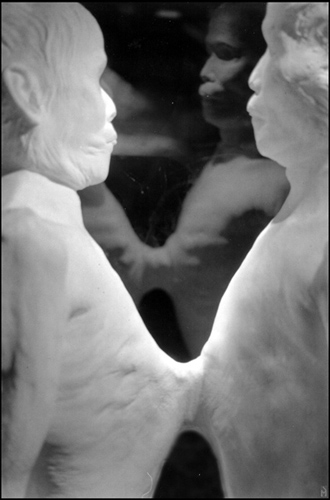
Chang & Eng No. 1
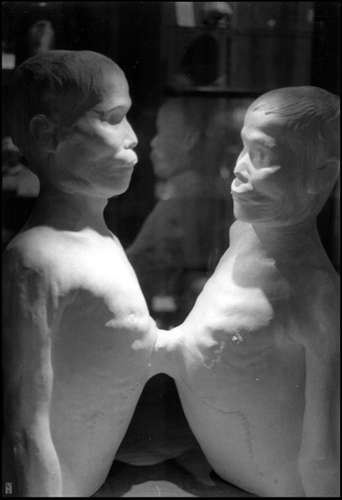
Chang & Eng No. 2
Plaster death cast of Chang & Eng Bunker (1811-1874), the original Siamese Twins. During their long career the twins
amassed and lost several fortunes. In the 1840s, Chang and Eng became naturalized American citizens and retired from show
business to live quiet lives as Southern planters. In 1843, they each married — sisters Adelaide and Sarah Yates — and began to father
numerous children, twenty-one between them. In the wake of the Civil War, the twins were forced to return to show business to recoup their financial losses.
When Chang and Eng died during the night of 16-17 January 1874 (Chang first of an apparent stroke, then Eng several hours later due to exsanguination), Drs. William Pancoast and Harrison Allen
from the College of Physicians traveled to Mount Airy, North Carolina, to collect the bodies for transportation back to Philadelphia for autopsy. As the twins had died some weeks before the doctors arrived,
it was necessary to disinter the remains and quickly embalm them. The bodies were then soldered into a tin box for transportation back to the College, where a more
thorough embalming procedure was undertaken prior to the autopsy on Monday, 9 February 1874.
During the autopsy it was discovered that the twins shared a conjoined liver, which is now displayed in a large jar beneath their death cast.
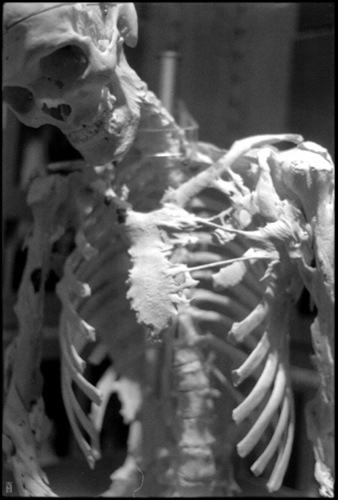
Calcified No. 1
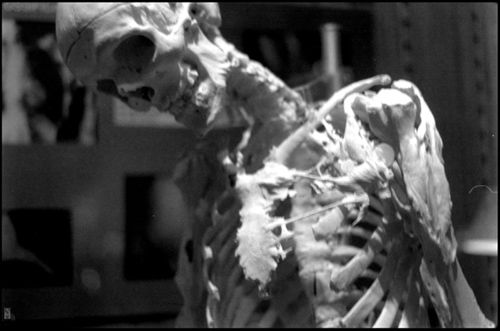
Calcified No. 2
Skeleton of Harry Eastlack (1933-1973) who suffered from fibrodysplasia ossificans progressiva, a condition in which muscle and connective tissue turns to bone.
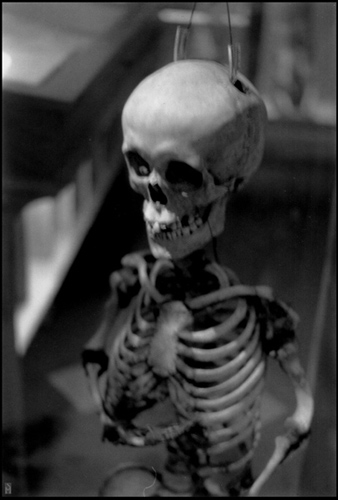
Dwarf skeleton
Skeleton of Mary Ashberry, 3’ 6” tall, who died in 1856. While living an working in Norfolk, Virginia, Ms. Ashberry became pregnant. Tragically, Mary's pelvis was too contracted to
allow the natural birth of her child and they both died in the attempt.
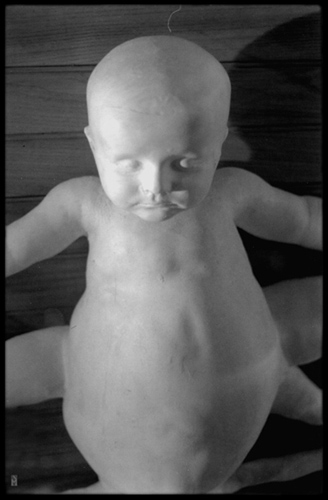
Conjoined
Plaster death cast of conjoined twins Mina and Minnie Finley (b. 12 October 1870,
d. 18 July 1871) of Peru Township, Ohio.
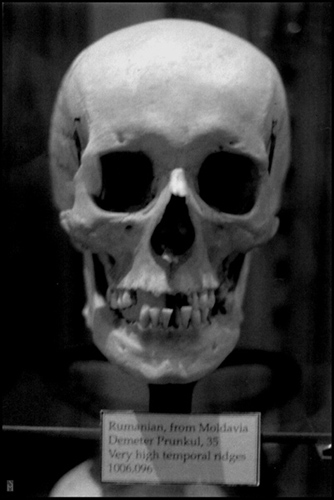
Rumanian, from Moldavia (Hyrtl Skull Collection)
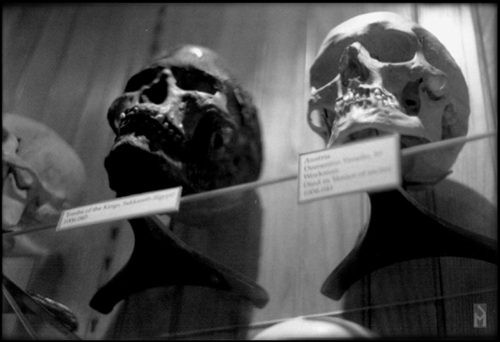
Categorized skulls (Hyrtl Skull Collection)
Austrian anatomist and phrenologist Joseph Hyrtl (1810-1894) amassed a large collection of human skulls and other bones from around the world for use in comparative anatomy studies. The Mütter Museum acquired more than 100 skulls from his collection in 1874.

All drawings and photographs by James G. Mundie.
[Reproduction in any form without express written permission
of the artist is prohibited.]
|

